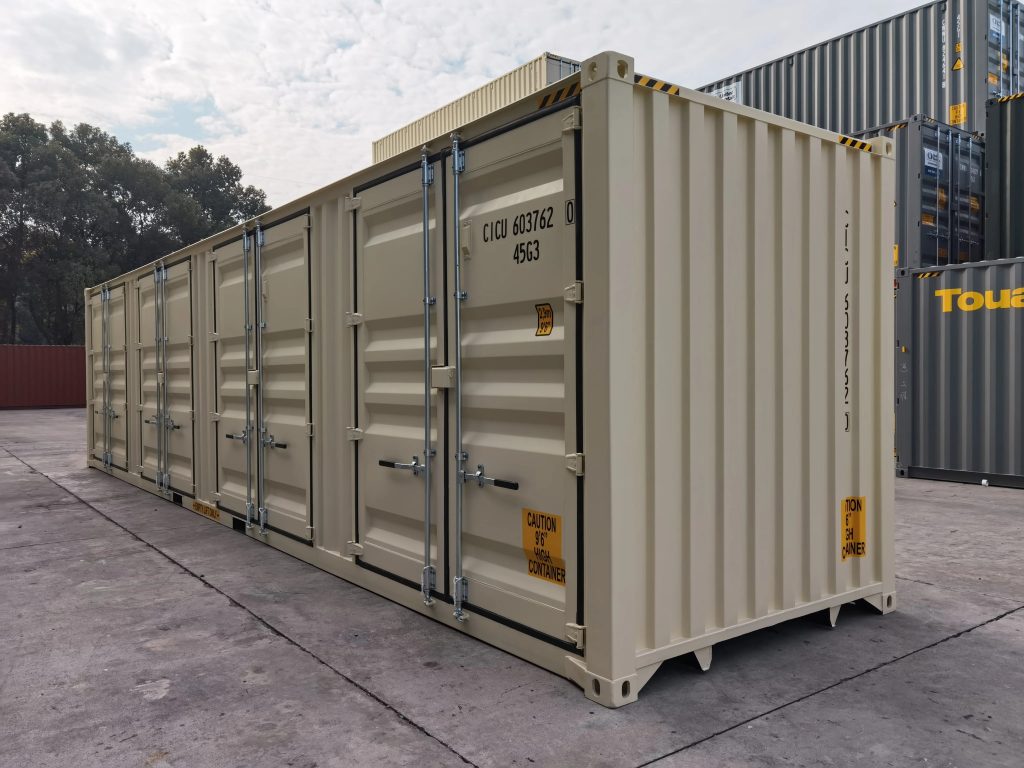Why Is Shipping Containers So Famous?
The Versatile World of Shipping Containers: More Than Just Cargo Carriers
Shipping containers are frequently seen as ordinary metallic boxes that facilitate international trade. However, their versatility extends far beyond carrying items across oceans. From innovative housing solutions to pop-up shops and even art setups, shipping containers are reinventing different markets. This article explores the diverse applications of shipping containers, offering insights into their usage, benefits, and the future capacity they hold.
The Basics of Shipping Containers
Shipping containers were developed in the mid-20th century to simplify global shipping. Available in basic sizes— most commonly 20-foot and 40-foot— they have actually ended up being the backbone of international trade.
Table 1: Common Shipping Container Dimensions
Container Type
Length (feet)
Width (ft)
Height (ft)
Typical Volume (cu ft)
Standard
20
8
8.5
1,169
High Cube
40
8
9.5
2,694
Basic
40
8
8.5
2,390
High Cube
20
8
9.5
1,350
These dimensions make them perfect for different uses aside from traditional shipping.
Diverse Applications of Shipping Containers
1. Housing and Modular Construction
Among the most amazing developments in shipping container usage is their adaptation for housing. Compact, long lasting, and fairly low-cost, they provide distinct solutions to the housing crisis.
- Cost: Compared to traditional building techniques, building homes with shipping containers can lower costs by 20-30%.
- Sustainability: By recycling old containers, home builders can create low-impact homes that minimize waste.
- Speed of Construction: Container homes can be built quickly, typically within weeks, thanks to their modular nature.
List of Container Home Features
- Energy efficiency (photovoltaic panels, effective insulation)
- Customizability (layout, designs)
- Mobility (easily carried)
- Resilience (resilient under severe weather condition)
2. Retail and Pop-Up Shops
Shipping containers are ending up being progressively popular as retail spaces. They can be changed into pop-up stores, food stalls, or perhaps long-term retailers. This trend is especially noted in city locations where area is valuable.
- Flexibility: They can be put practically anywhere, targeting high-traffic locations.
- Branding: Unique container styles can boost a brand's image, drawing in clients.
- Cost-effectiveness: Lower overhead expenses make it simpler for small companies to go into the market.
Table 2: Advantages of Shipping Containers in Retail
Benefit
Explanation
Lower rental costs
More affordable than conventional retail spaces
Short setup time
Quick setup permits fast entry
Customization choices
Easy to customize for branding requirements
Environmentally friendly option
Uses recycled products
3. Disaster Relief and Emergency Shelters
In times of natural disasters, shipping containers are increasingly used as momentary shelters. Their durability and weather condition resistance make them ideal for fast deployment in crisis situations.
- Fast Deployment: Containers can be transferred to impacted locations rapidly.
- Durable: Designed to hold up against severe conditions, they provide reliable shelter.
- Adjustable: Can be modified into numerous types of accommodations, from single systems to bigger community centers.
4. Art Installations and Creative Spaces
Artists have begun using shipping containers as canvases and galleries. Their unique sizes and shapes motivate ingenious installations, making them a stylish choice in public and personal art tasks.
List of Artistic Applications
- Interactive art setups
- Gallery spaces for exhibits
- Performance venues
- Mobile art studios
Shipping Containers: A Sustainable Choice
The shift towards sustainability can not be ignored. Making use of shipping containers motivates recycling and adaptive reuse, assisting to decrease the carbon footprint connected with conventional building materials. Furthermore, lots of container homes and companies emphasize energy efficiency through making use of green innovations.
Table 3: Environmental Benefits of Using Shipping Containers
Advantage
Description
Decreased Waste
Recycling old containers lessens land fill use
Lower Energy Consumption
Many designs focus on eco-friendly practices
Very Little Resource Use
Needs fewer new products compared to traditional builds
Frequently Asked Questions about Shipping Containers
Q1: Can shipping containers be used for long-lasting housing?
A1: Yes, numerous housing projects utilize shipping containers as long-lasting residences, particularly in regions facing housing shortages.
Q2: How do shipping containers hold up versus severe weather condition?
A2: Shipping containers are created to stand up to harsh marine conditions, making them resilient versus severe weather condition occasions.
Q3: Are shipping containers safe to use?
A3: Yes, correctly modified shipping containers fulfill constructing codes and security requirements. Shipping Container Cost to seek advice from experts during the modification procedure.
Q4: What are the costs related to buying and customizing a shipping container?
A4: The cost can vary widely depending on size, condition, and modifications but typically varies from ₤ 1,500 to ₤ 5,000 for the container itself, with additional expenses for modification that can go beyond the preliminary purchase cost.
Q5: Where can I buy shipping containers?
A5: Shipping containers can be bought from specialized dealers, shipping business, or online markets.
The Future of Shipping Containers
As the world continues to embrace sustainability and ingenious solutions, the possible applications of shipping containers will just grow. Architects, business owners, and neighborhoods are constantly discovering new methods to repurpose these once simply utilitarian items.
Shipping containers are not simply vessels for transferring items; they are transforming living and working spaces, fostering imagination, and paving the method for a more sustainable future. As we continue to develop these solutions, the simple shipping container may extremely well become a sign of development in the 21st century.
